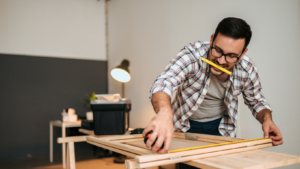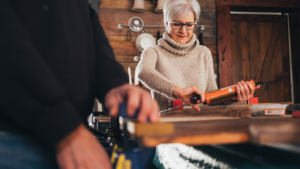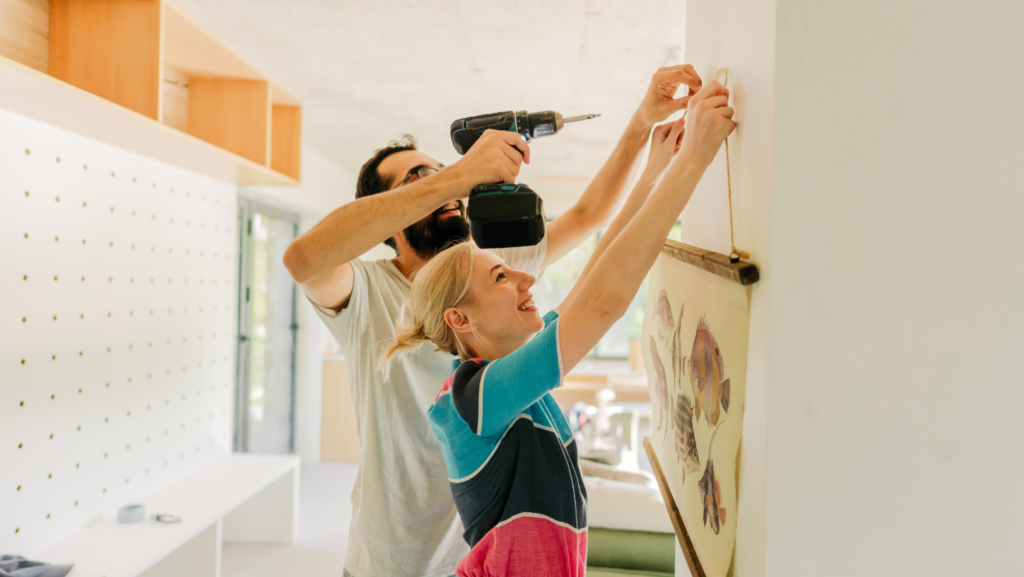Who says DIY projects are just for kids? Adults, too, can tap into their inner creative genius and reap the rewards of crafting something with their own two hands. From home decor to practical tools, the world of DIY is vast and exciting, waiting for you to dive in.
Whether you’re a seasoned DIYer or a curious beginner, there’s a project that’s right for you. With a dash of creativity and a sprinkle of patience, you’ll be well on your way to creating something truly unique. So, let’s roll up our sleeves and get ready to explore the fascinating realm of DIY projects for adults.
DIY Projects for Adults
 Embarking on a DIY projects for adults journey can lead to the creation of practical and decorative items. This section offers advice on constructing a picture frame and reusing older household items.
Embarking on a DIY projects for adults journey can lead to the creation of practical and decorative items. This section offers advice on constructing a picture frame and reusing older household items.
Advancing from basic DIY projects, adults might find fulfillment in tackling more complex tasks. Intermediate DIY projects require heightened attention to detail, furthering the cognitive and skill-building benefits of DIY activities.
Making a Fully Functional Birdhouse
A birdhouse serves as an excellent DIY project for adults seeking to challenge their DIY skills. Aside from offering a sanctuary for feathered friends, constructing a birdhouse requires a meticulous approach, combining woodworking and artistic skills.
- Materials Gathering: Collect essential materials such as untreated wooden planks, galvanized screws, and waterproof paint. Tools like a saw, screwdriver, drill, paintbrush, and sandpaper prove indispensable at this stage.
- Designing and Measuring: Sketch your desired birdhouse design, noting dimensions carefully. Ensure that the design is functional with adequate ventilation and appropriate size for local bird species.
- Cutting and Assembling: After designing and measuring, cut the wooden planks according to the noted dimensions. Assemble the parts using the galvanized screws tightly but carefully, providing a sturdy structure.
- Finishing Touches: Following assembly, sand the birdhouse to smooth any rough edges. Finish by applying the waterproof paint, allowing for a touch of creativity while ensuring durability against weather elements.
Transforming Old Furniture Into Art Pieces
 Transforming old, unused furniture into art pieces presents an engaging and valuable DIY project for adults. This task merges creativity with environmental responsibility, expanding the DIY project’s impact from personal to global.
Transforming old, unused furniture into art pieces presents an engaging and valuable DIY project for adults. This task merges creativity with environmental responsibility, expanding the DIY project’s impact from personal to global.
- Selecting and Assessing the Furniture: Choose a piece of old furniture like a chair, table, or cabinet. Assess its structure, material, and any necessary repair work.
- Repair and Cleaning: If necessary, fix any structural damages using wood glue, clamps, or screws. Follow this by sanding the furniture for paint adhesive and cleaning to remove dust particles.
- Designing and Painting: Design an artful transformation for the piece. This could involve intricate patterns, abstract paint splashes, or the application of stencils. Paint the furniture according to your chosen design, ideally using furniture-friendly paint.
- Sealing and Finishing: After the paint dries, apply a coat of sealant for longevity. Adding embellishments like rhinestones or vintage knobs can enhance the artistic appeal of the transformed furniture.
Tips for Successful DIY Projects
 This section expands on effective strategies for successful DIY projects for adults, highlighting key considerations like common mistakes, and the value of trials and errors.
This section expands on effective strategies for successful DIY projects for adults, highlighting key considerations like common mistakes, and the value of trials and errors.
First, it’s essential to avoid common pitfalls that can derail a DIY project. Failing to conduct adequate research prior to beginning a project leaves many amateurs with unrealistic expectations. For instance, underestimating time requirements, neglecting to plan thoroughly, and opting for low-quality tools to save costs are common errors.
Additionally, individuals often skip important safety measures, creating hazardous work conditions. For instance, foregoing personal protective equipment, such as safety goggles and gloves, or failing to maintain a clean workspace can contribute to unnecessary accidents.
Moreover, many tend to overlook the complexity of a task, jumping into projects beyond their skill level, and consequently, end up abandoning them mid-way due to excessive challenges. Similarly, not factoring in the potential for trials and errors into project timelines also leads to frustration, prompting many to abandon their DIY journey.



